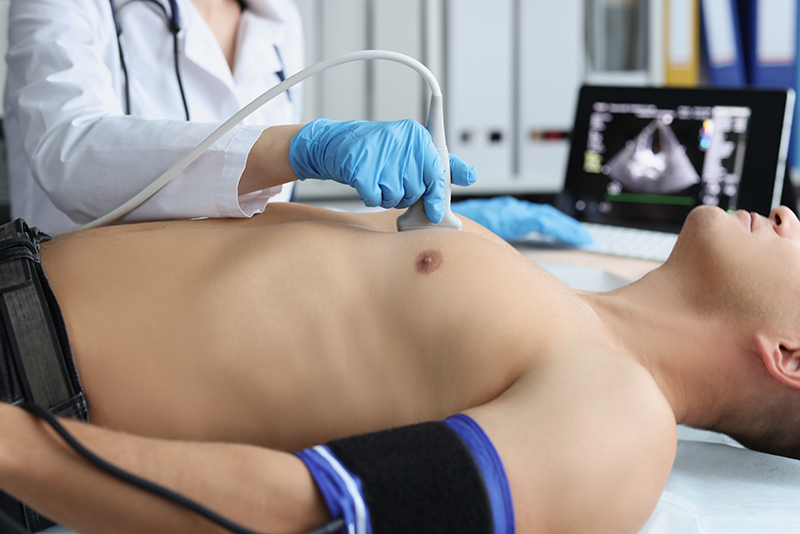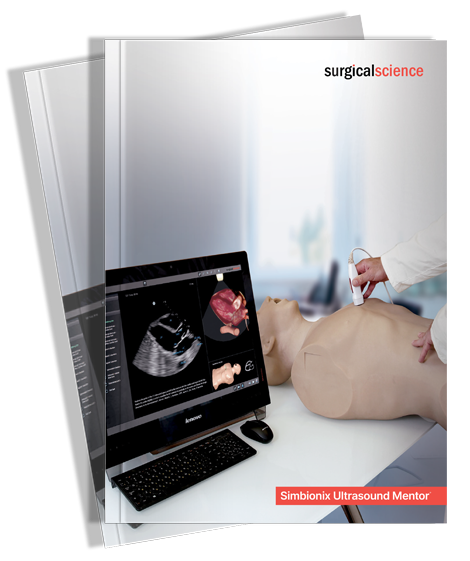
How to Train for POCUS
What is POCUS and How Do You Train for It?
Once an imaging modality tool exclusively used by radiologists, obstetricians, and orthopaedists, ultrasound has expanded its application well beyond these specialties, thanks to the adoption of POCUS.
What is POCUS?
 Point-of-care ultrasound (POCUS) is defined as “a diagnostic or procedural guidance ultrasound that is performed by a clinician during a patient encounter to help guide the evaluation and management of the patient.”
Point-of-care ultrasound (POCUS) is defined as “a diagnostic or procedural guidance ultrasound that is performed by a clinician during a patient encounter to help guide the evaluation and management of the patient.”
A key feature of POCUS is that it is not a replacement to performing a consultative radiology ultrasound but a focused ultrasound examination usually performed at the bedside of the patient, often in suboptimal conditions and with time limitations. Hence the application is structured to answer a focused clinical question (or set of questions), which can augment clinical care.
The popularity of use of POCUS over its imaging counterparts (CT/MR/X-Ray) has been influenced by a newer generation of tailored ultrasound systems: reduction in cost and relative size, improved portability and quality, ease of use and speedy start-up times.
Benefits of Care Using POCUS
Ultrasound continues to offer many advantages over other imaging modalities because it is relatively less expensive to acquire, easier to disinfect, and radiation-free. But its uses extend far beyond some of the more traditional practices.
POCUS Training
Learning at the bedside without an adequate amount of experience early on in training can often create a stressful environment for the trainee which can be detrimental to the learning environment and potentially harmful to the patient.
Therefore, the use of medical simulation training is becoming more established, and in North America POCUS fellowships are well established to ensure appropriate opportunities for POCUS training are provided. What is medical simulation you might ask? Medical simulation is a situation in which a particular set of conditions is created artificially in order to study or experience something that could exist in reality. They allow medical trainees to develop their skills in a controlled environment, away from ‘real’ patients.
There are many types of simulators being used for POCUS training – from simple anatomical models to state-of-the-art Virtual Reality simulators – but VR is driving the future of medical simulation training with their ability to create an immersive experience that places the trainees into hyper-real scenarios.
Applications of POCUS
POCUS is used for multiple head-to-toe applications.
POCUS is particularly valuable in emergency medicine, allowing rapid assessment of critical conditions like trauma, cardiac emergencies, and abdominal pain. It is also indispensable in obstetrics and gynecology, providing real-time visualization of the fetus and aiding in the management of pregnancy-related issues. Additionally, POCUS is used in critical care units to monitor vital organs and guide invasive procedures, such as central line placements. It plays a significant role in sports medicine for on-field assessments of musculoskeletal injuries. Moreover, it has applications in primary care, internal medicine, and anesthesiology, offering a versatile tool for non-invasive examination and decision-making at the patient’s bedside.
Training primary care physicians in general, and emergency care providers, in particular, is key to scaling up POCUS use. Here is a great study on the benefits and barriers of using Point-of-Care Ultrasound in primary healthcare in the United States.
Why Choose Ultrasound Mentor for your POCUS training needs?
Now that you know what POCUS is and the importance of training, see how Surgical Science can help you with our Ultrasound Mentor VR medical simulator.
Download The Brochure
Do you want to know more about our offerings for POCUS training? Fill out the below form to receive our brochure.
